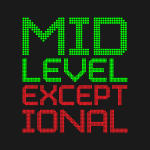Asked and Answered: What’s the Purpose of Cap Holds?
Now that you’ve seen how much cap space every team in the East and the West could free up this summer, there’s one major loophole that requires addressing: cap holds. Reader Kirk Henderson sent us the following question last night:
Why do teams have “Cap holds” and what function do they serve?
For every free agent — both restricted and unrestricted — each team is charged a cap hold of a varying amount (the specifics of which we’ll address below). Until a team renounces its rights to a free agent, re-signs said player following the July Moratorium, or the player signs a contract with another team, the cap hold effectively stops the team from using that cap space on other free agents.
Essentially, cap holds are what prevent Pat Riley from inking a bevy of marquee free agents before turning his attention to re-signing the Big Three. If cap holds didn’t exist, this past year’s iteration of Miami’s “super team” would be child’s play compared to the Godzilla-esque monstrosity Riley could build this summer. (Think a starting five of Kyle Lowry, Dwyane Wade, LeBron James, Carmelo Anthony and Marcin Gortat, with Chris Bosh, Udonis Haslem and Ray Allen coming off the bench.)
Here’s a summary of the different types of cap holds that apply for free agents, all of which are based off the player’s previous salary (courtesy of Larry Coon’s invaluable Salary Cap FAQ):
Minimum salary: Any free agent who’s coming off a minimum salary.
120% of previous salary: Any non-Bird free agent.
130% of previous salary: Any Early Bird free agent not coming off the second year of their rookie-scale salary.
150% of previous salary: Any non-rookie-scale Larry Bird free agent with a previous salary that met or exceeded the estimated average salary.
190% of previous salary: Any non-rookie-scale Larry Bird free agent with a previous salary that fell below the estimated average salary.
200% of previous salary: Any Larry Bird free agent coming off the fourth season of his rookie-scale contract with a previous salary that met or exceeded the estimated average salary.
250% of previous salary: Any Larry Bird free agent coming off the fourth season of his rookie-scale contract with a previous salary that fell below the estimated average salary.
For Early Bird free agents coming off the second season of their rookie-scale contracts, their cap hold is the maximum amount their team can pay them using the Early Bird exception. For Larry Bird free agents coming off the third season of their rookie-scale contracts, their cap hold is the maximum amount their team can pay them using the Larry Bird exception. According to Coon’s FAQ, restricted free agents are included in team salary by the greatest of their free-agent amount (laid out above), the amount of their qualifying offer, or their first-year salary in a first refusal exercise notice (a matched offer sheet).
For the players in the 150 percent to 250 percent range, their cap holds cannot exceed their maximum salary. So, until Miami’s Big Three agree on new deals, for instance, Chris Bosh and LeBron James each count against Miami’s cap as $20,020,875 (105 percent of their previous salaries) and Dwyane Wade counts for $19,606,650 (105 percent of his previous salary). That’s why the Big Three need to have frameworks of contracts in place before Riley can start making moves elsewhere; otherwise, he has no cap space with which to work his magic.
Cap holds aren’t perfect. Dirk Nowitzki’s cap hold, $23,857,480, is far higher than he’s likely to re-sign for, theoretically limiting Dallas’ free-agent options (were he not to agree to the framework of a new deal by July 9). Meanwhile, Eric Bledsoe’s cap hold of $6,566,183 (250 percent of his previous salary) is far lower than what he’s likely to command as a free agent this offseason. The same goes for Chandler Parsons ($2,875,130, his qualifying offer) and Greg Monroe ($10,216,135, 250 percent of his previous salary).
Still, those rare instances in which cap holds are wildly off-base are certainly better than the alternative: a free-for-all in which teams could spend the entirety of their available cap space before turning their attention to their own free agents.
All salary information and free-agent cap holds courtesy of ShamSports.com.


